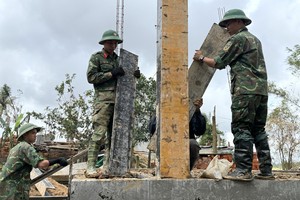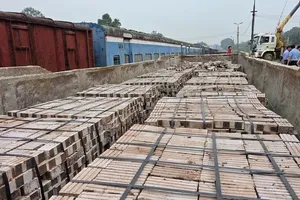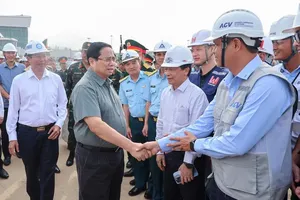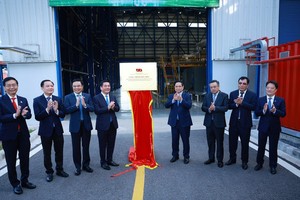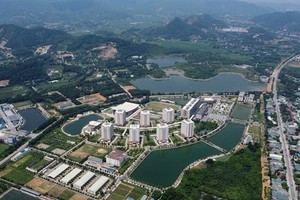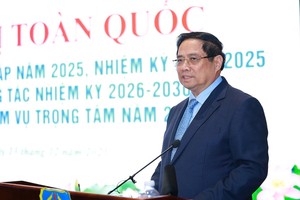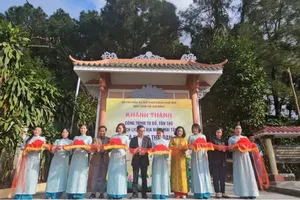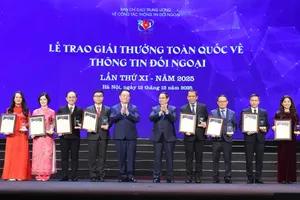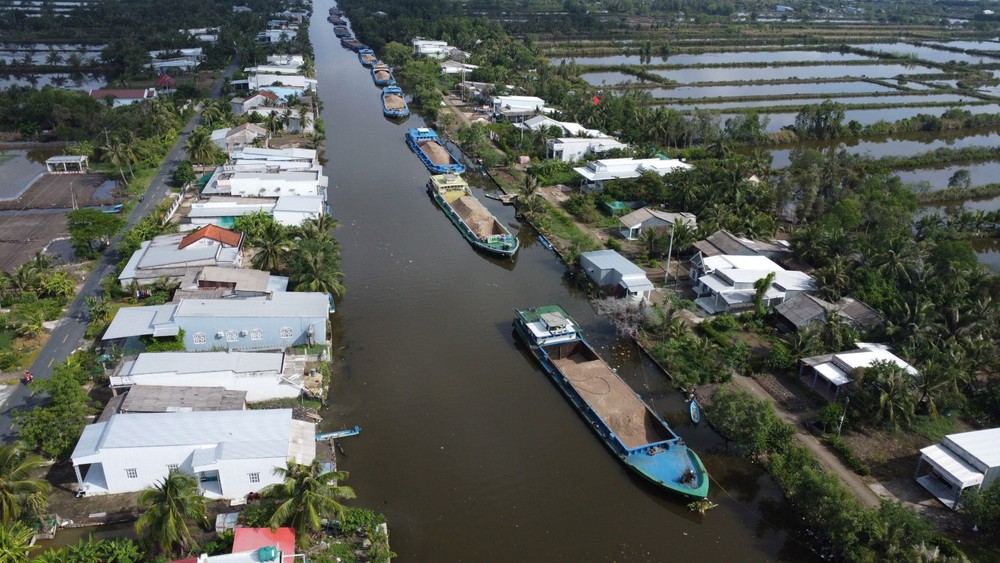
After more than 10 days of commencing sea sand exploitation, this resource has now been transported to fill in the construction site of Can Tho - Ca Mau expressway.
The first batches of sea sand for filling key transportation projects as directed by the Government have arrived at Huyen Su Canal in Tan Phu Commune of Ca Mau Province’s Thoi Binh District. Barges have continued to pump sea sand to the construction area under package XL02 (the section passing through Thoi Binh District) for filling.
Owner of a barge Kieu Quoc Thanh who has been participating in transporting sea sand said that this is the first time that sea sand has been exploited and transported to the construction site of the expressway. Measuring volume, issuing invoices, and monitoring are all carried out strictly and carefully by relevant departments. Inside this project, when sand was transported to the construction site, workers were rushed off their feet.
Director Pham Van Du of the XL02 package management board said that since the evening of July 9, when the first barge carrying sea sand docked, the unit has mobilized more than 50 engineers, equipment, and machinery to the construction site, accelerating the work progress which has been stagnant due to a lack of sand before. This sand source not only helps the investor and contractor to ensure the construction progress of the project, reducing additional investment costs but also helps the project to reach its destination soon.
Prior, VNCN E&C Investment Construction and Technology Joint Stock Company publicly commenced offshore sand extraction in subzones B1.1 and B1.2 (part of the B1 offshore sand mining area in Soc Trang province) covering an area of 99.95 hectares with an estimated extraction volume of around 6 million cubic meters on June 29. The sand extracted from this source will be used for road construction in the eastern North-South Expressway Project during the 2021-2025 phase, specifically the Can Tho - Ca Mau section.
According to representatives from VNCN E&C, the sand extraction method in the B1 zone of Soc Trang involves using suction pipes on vessels to collect sand from the seabed.
This extraction process is carefully managed to avoid creating deep pits and prevent erosion both in the short term and long term. Subsequently, the sand is transported to designated storage areas using barges with a capacity of 2,000 to 3,000 cubic meters. The offshore sand extraction area is delimited by specific coordinates at its four corners.
The permissible depth for extraction is 7.5 meters, and the allowable height is 5 meters above sea level. The extraction period is calculated from the date of the decision assigning the offshore area until December 21, 2024.
Director Tran Van Thi of the My Thuan Project Management Board said that regarding the management, exploitation, and construction of sea sand, the board has directed the contractor to organize management, exploitation, and transportation in strict compliance with the law throughout the exploitation process.
Regarding monitoring and assessing the impact level during the construction using sea sand, the My Thuan Project Management Board has sent a document to the People's Committees of Bac Lieu, Kien Giang, and Ca Mau provinces to coordinate environmental monitoring. The Board also invited relevant departments, agencies, and localities to participate in sampling and regular monitoring.
The People's Committee of Soc Trang Province requires the sea sand contractor to fully record, inventory, and summarize the quantity of minerals exploited. Moreover, the contractor ought to report to the provincial People's Committee each month and their machinery for exploitation must be registered and inspected. Simultaneously, journey monitoring devices must be installed and data and information about the position and itinerary of the vehicles and equipment used for exploitation must be stored.
Chairman Tran Van Lau of the Soc Trang Provincial People’s Committee said that to manage and monitor offshore sand extraction activities, the province has established an interdisciplinary mission team that will regularly monitor, inspect, and supervise the extraction volume, types of vehicles, and equipment used to ensure that the offshore sand supply aligns with the registered plan.
The Ministry of Natural Resources and Environment (MONRE) and the Ministry of Transport (MOT) completed the project ‘Assessment of offshore sand resources for highway and transportation infrastructure projects in the Mekong Delta region’ in December 2023. The B1 offshore sand mining area in Soc Trang covers approximately 32 square kilometers (approximately 20 km from the Dinh An estuary) with a total estimated reserve of around 13.9 billion cubic meters. Among these reserves, approximately 145 million cubic meters of offshore sand can be immediately extracted, meeting the requirements for use as filling material.











